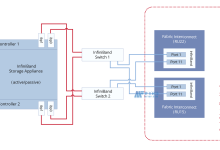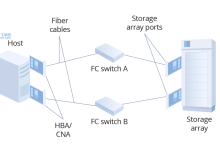Monitoring network performance is essential for ensuring a reliable and secure system. In this guide, we will be discussing the use of linux and MRTG (Multi Router Traffic Grapher) for monitoring network performance in Linux-based systems.
Linux is an open-source operating system that is widely used for server and desktop applications. The ability to monitor network performance in a Linux system is invaluable, as it helps identify problems with the network before they become a problem for users. MRTG is an open-source monitoring software that is specially designed to analyze, monitor, and report network performance. Audits and alerts in MRTG are used to detect potential or existing anomalies in the system.
To utilize MRTG for network performance monitoring in a Linux system, one must first install the software. The most common installation methods involve downloading the source code and compiling the program, or installing the binary package via a package manager. Once installation is complete, configuration of the MRTG software begins. The configuration file must specify what specific metrics the software should monitor and the type of network information it should collect. These parameters will vary based on the specific requirements of the system.
Next, the MRTG software must be configured to send metrics to a server. This can be done using a SNMP daemon, or using a custom logger plugin. Once the metrics have been sent, they can be visualized using a web-based MRTG tool. This will provide a user-friendly graphical representation of the metrics being monitored.
Once the MRTG tool is properly configured and is sending out metrics to the server, one can set up alerts for certain metrics. Alerts can be set for any metric that does not meet a specific threshold. These alerts can be sent out as emails or notifications, helping administrators identify issues as soon as they arise.
Finally, MRTG data can be used to generate reports. Reports can be used to track network performance over time, which helps to identify any long-term issues or trends. This data can also be used to troubleshoot any anomolies that are detected.
Monitoring network performance with Linux and MRTG is a great way to ensure the reliability and security of a system. The step-by-step process outlined in this guide can help anyone get their system up and running quickly. With the right configuration, the MRTG software can vastly improve the efficiency and accuracy of network performance monitoring.

 国外主机测评 - 国外VPS,国外服务器,国外云服务器,测评及优惠码
国外主机测评 - 国外VPS,国外服务器,国外云服务器,测评及优惠码












